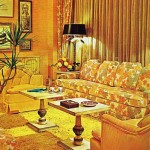Ideas for Decorating a Round Dining Room Table
A round dining room table presents a unique opportunity for creating a welcoming and aesthetically pleasing focal point within the dining space. Unlike rectangular tables, the circular shape promotes conversation and intimacy, making it ideal for both casual meals and formal gatherings. Decorating a round table effectively involves understanding its inherent characteristics and selecting complementary elements that enhance its appeal without overwhelming the space.
The success of a round table centerpiece hinges on a delicate balance between visual interest and practicality. Obstructions that hinder conversation or impede access to food should be avoided. Instead, decorations should enhance the dining experience, creating a cohesive and stylish atmosphere.
Selecting the Right Centerpiece
The centerpiece is arguably the most crucial element in decorating a round dining room table. Its size, shape, and style should complement the table's dimensions and the overall aesthetic of the room. A centerpiece that is too large can dominate the table, while one that is too small may appear insignificant and lost within the expanse.
Consider the height of the centerpiece as well. Tall, elaborate arrangements can be visually stunning but may obstruct views across the table, hindering conversation. Lower arrangements, or those with a slim profile, are generally preferred for practical reasons.
Several categories of centerpieces are well-suited for round dining tables:
- Floral Arrangements: Fresh flowers are a classic choice, adding color, fragrance, and a touch of elegance. Consider seasonal blooms to create a centerpiece that reflects the time of year. Opt for a round vase or a low, sprawling arrangement to complement the table's shape. Ensure the vase's material and color coordinate with the dining room's overall design. Hydrangeas, roses, and peonies are examples of flowers that work well in round arrangements.
- Candle Displays: Candles create a warm and inviting ambiance, particularly for evening meals. A cluster of varying height pillar candles on a decorative tray can be an effective centerpiece. Alternatively, a candelabra can add a touch of sophistication. Flameless LED candles offer a safe and convenient alternative, especially in households with children or pets. Consider the scent of the candles; subtle, complementary fragrances are preferable to overpowering ones.
- Fruit and Vegetable Displays: For a more unconventional and vibrant centerpiece, consider arranging fresh fruits and vegetables. A tiered display of citrus fruits, or a bowl overflowing with colorful vegetables, can add a touch of rustic charm. This type of centerpiece is particularly well-suited for kitchens or dining rooms with a farmhouse or country-style aesthetic. Ensure the produce is fresh and appealing, and replace it regularly to maintain its visual appeal.
- Sculptural Objects: A single, carefully chosen sculptural object can serve as a striking centerpiece. This could be a piece of pottery, a metal sculpture, or a glass artwork. The piece should be visually interesting and complement the style of the room. Consider the scale of the object relative to the table's size; a larger table can accommodate a more substantial sculpture.
- Greenery: Potted plants or terrariums can bring a touch of nature indoors. A small grouping of succulents or a miniature herb garden can add a fresh and vibrant element to the table. Ensure the plants are well-maintained and receive adequate light. Greenery is particularly effective in spaces that lack natural light, providing a visual connection to the outdoors.
When selecting a centerpiece, it's essential to consider the overall style of the dining room. A formal dining room might benefit from an elegant floral arrangement or a sophisticated candelabra, while a more casual dining room might be better suited to a rustic fruit display or a simple grouping of candles.
Incorporating Table Linens and Placemats
Table linens and placemats play a significant role in enhancing the overall aesthetic of a round dining room table. They provide texture, color, and pattern, and can help to protect the table's surface. The choice of linens and placemats should complement the centerpiece and the overall style of the room.
A tablecloth can create a formal and elegant look, while placemats offer a more casual and practical alternative. Consider the material, color, and pattern of the linens and placemats to ensure they coordinate with the centerpiece and the surrounding décor.
Here are some considerations when choosing table linens and placemats:
- Tablecloths: A round tablecloth that drapes appropriately can dramatically transform the look of a table. Choose a fabric that complements the room's style; linen or silk for a formal setting, cotton or a textured fabric for a more casual atmosphere. The color should either coordinate with the centerpiece or provide a neutral backdrop. Avoid tablecloths that are too long, as they can be a tripping hazard. A slight overhang is generally preferred.
- Placemats: Placemats are a practical and stylish alternative to a tablecloth. They protect the table's surface from spills and scratches, and they add a visual element to each place setting. Round placemats are a natural choice for a round table, echoing its shape. However, rectangular or square placemats can also work well, creating a visual contrast. Consider the material; woven placemats add texture, while vinyl placemats are easy to clean.
- Runners: While less common on round tables, a table runner can add a strip of visual interest, especially if the table is large. Position the runner across the center of the table, underneath the centerpiece, to create a focal point. Choose a runner that complements the color and style of the centerpiece and the tablecloth or placemats.
- Napkins: Cloth napkins add a touch of elegance to any table setting. Choose napkins that coordinate with the tablecloth or placemats. Consider the folding style; a simple fold is often the most elegant. Napkin rings can add a decorative element, but should not be overly elaborate or distracting.
When selecting table linens and placemats, it's important to consider the occasion. For a formal dinner party, a crisp linen tablecloth and elegant napkins are appropriate. For a casual brunch, a simple cotton tablecloth or placemats might be more suitable.
Considering the Surrounding Space
Decorating a round dining room table is not just about the table itself; it's also about considering the surrounding space. The table should complement the overall style of the dining room, and the decorations should enhance the room's ambiance. Consider the color scheme, lighting, and other decorative elements in the room to create a cohesive and harmonious space.
The size of the dining room should also be taken into consideration. A small dining room might be overwhelmed by a large, elaborate centerpiece. In contrast, a large dining room might require a more substantial centerpiece to fill the space.
Here are some ways to consider the surrounding space when decorating a round dining room table:
- Color Palette: The colors used on the table should complement the colors in the rest of the room. Consider the wall color, the flooring, and the furniture. If the room has a neutral color scheme, you can add pops of color with the centerpiece and table linens. If the room is already colorful, consider using more neutral decorations on the table to avoid overwhelming the space.
- Lighting: The lighting in the dining room can significantly impact the ambiance. Consider the type of lighting fixtures and the intensity of the light. A chandelier can add a touch of elegance, while pendant lights can create a more modern look. Dimmable lights allow you to adjust the lighting to suit the occasion. Consider how the lighting will affect the appearance of the centerpiece and table linens.
- Furniture: The furniture in the dining room should complement the table. Choose chairs that are comfortable and stylish. Consider the material and color of the chairs; they should coordinate with the table and the overall style of the room. A sideboard or buffet can provide additional storage and display space.
- Artwork: Artwork can add a personal touch to the dining room. Choose pieces that reflect your style and interests. Consider the size and placement of the artwork; it should complement the table and the other decorative elements in the room.
- Rugs: A rug can define the dining area and add warmth and texture to the space. Choose a rug that is large enough to accommodate the table and chairs. Consider the color and pattern of the rug; it should complement the table and the other elements in the room.
Ultimately, decorating a round dining room table is about creating a space that is both functional and beautiful. By carefully considering the centerpiece, table linens, and surrounding space, it is possible to create a dining area that is welcoming, stylish, and conducive to conversation and enjoyment.

10 Stunning Decorating Ideas To Style A Round Dining Room Table

40 Glass Dining Room Tables To Revamp With From Rectangle Square Round Table Small

10 Stunning Decorating Ideas To Style A Round Dining Room Table

17 Classy Round Dining Table Design Ideas Room Small Glass

19 Round Dining Tables That Make A Statement Architectural Digest

10 Stunning Decorating Ideas To Style A Round Dining Room Table

How To Decorate A Round Dining Table 10 Ideas Room Design Rug Under Decor

10 Stunning Decorating Ideas To Style A Round Dining Room Table

Dining Room Design Ideas With Round Tables

Round Dining Table Design Ideas







